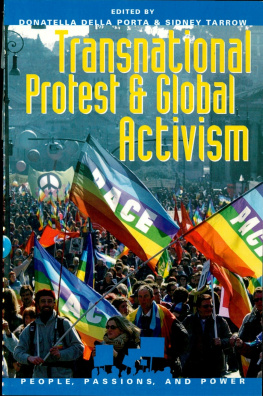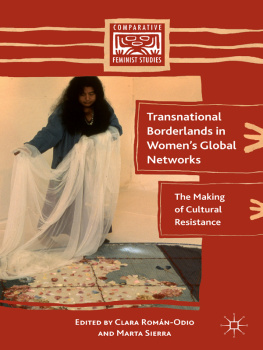First published in the UK in 2011 by
Intellect, The Mill, Parnall Road, Fishponds, Bristol, BS16 3JG, UK
First published in the USA in 2011 by
Intellect, The University of Chicago Press, 1427 E. 60th Street,
Chicago, IL 60637, USA
Copyright 2011 Intellect Ltd
All rights reserved. No part of this publication may be reproduced, stored in a retrieval system, or transmitted, in any form or by any means, electronic, mechanical, photocopying, recording, or otherwise, without written permission.
A catalogue record for this book is available from the British Library.
Cover designer: Holly Rose
Copy-editor: Integra Software Services
Typesetting: Mac Style, Beverley, E. Yorkshire
ISBN 978-1-84150-349-3
Printed and bound by Gutenberg Press, Malta.
T he development of a new cultural vocabulary, wherein celebrityhood holds a preeminent position, indicates the pervasiveness of celebrity culture in our everyday lives and popular culture. Celebrities, pretty much like stars, can be seen as persons who, in the eyes of other members of the society, are especially remarkable and attract universal attention despite the fact that they usually hold limited or non-existent institutional power; in fact, as we shall argue in this volume, we have entered a new era where celebrities increasingly occupy institutional positions of power in this case through activist, diplomatic and charity initiatives.
In this context then, and taking a cue from Alberoni (2007), perhaps in present day society, which is marked by a high level of interdependence, celebrities can provide a common point of reference for all without the institutional barriers that would separate, for example, the king or nobles from their lay public. Celebrities attract unconditional admiration and interest and are usually credited with capacities superior to those of other people, as a result of which they are invested with a Weberian (1968: 241) charisma. It is this notion of charisma, in conjunction with a number of converging factors, such as the recent rise of philanthrocapitalism, a climate of political correctness, a strong civil society among many western states where volunteering is firmly grounded, as well as the Wests collective guilt over its accumulated wealth compared to Third World suffering, which make celebrities amenable to becoming advocates of activist causes on human poverty.
The economy of celebrity culture, says Graham Turner (2004), dictates that celebrities develop a strategy for building and maintaining consumer (i.e. audience) loyalty by forging and safeguarding a symbiotic relationship with the media; taking this further, we suggest that celebrity activism and charity may be interpreted as part and parcel of this symbiosis, whereby the celebrity persona is this all-round individual who, apart from feeding publicity events to the media upon mundane matters such as their latest show, film, album, romance, vacation and the like, also takes active interest in heavy artillery matters such as Third World debt, world famine, child soldiers or the vaccination of children in Africa. Then, when the publicity frenzy focuses on the individual celebrity, the good cause gets maximum media coverage and exposure as well.
Perhaps, this is one way for the celebrity industry to develop a facet of social corporate responsibility when it capitalizes heavily on the likes of the Brangelina couple (active in Congo, Ethiopia and Sudan among other countries), Coldplays Chris Martin (in Ghana where the singer works on fair trade on behalf of Oxfam), Jay-Z (in Nigeria, where the rap idol and spouse of Beyonce is also renowned for supporting a United Nations project for drinkable water), actress Natalie Portman (in Uganda, following a documentary on gorillas in Rwanda, where she supports FINCA, a charity providing funding to remote communities around the globe), football legend Pele (in Egypt, where he supports the Littlest Lamb charity, which has recently set up an orphanage), and many others, including Prince Harry, His Highness Albert of Monaco and Carla Bruni-Sarkozy, to put the message across continents. As a result, drawing from a previous era when film stars operated as a means to promote consumer capitalism (Turner 2004) a process initiated in the 1930s and 1940s and continued to this date celebrity activism can be seen, we suggest, as a way to negotiate the promotion of philanthrocapitalism and environmentalism across the globe.
Although a system for celebrity creation has been in place firmly since the birth of mass commercial culture, public visibility of celebrities has grown considerably as a result of new mechanisms for garnering attention i.e. SNSs, microblogging. Changes in the organization of publicity and in technology have had a profound impact on the operation of celebrity, already since the mid-nineteenth century, where celebrity was established as a mass phenomenon through newspapers and the telegraph; whereas in the first half of the twentieth century, the myth that fame was a natural cream-rising-to the-top phenomenon largely reigned, around 1950, changes in the celebrity-building system (i.e. breakdown of studio control, rise of television, a boom in the supply of celebrities) destabilized the prevailing celebrity discourse and the publicity enterprise invited audiences as insiders to the publicity game itself (Gamson 1992/2007: 142).
Although today the relationship between audiencecelebrity is close and clearly articulated compared to earlier times (which means that audiences of today are aware of the manufactured nature of the celebrity images they consume and of the publicity machine that engulfs these images as opposed to the less media-savvy audiences of the early celebrity texts during the first half of the twentieth century), we argue that the extent to which audiences are suspicious of celebrities interior motives (i.e. quest for self-exposure, capitalization of a noble cause for self promotion etc.) when it comes to embracing altruistic objectives is debatable, and it is to this end that targeted qualitative audience research is needed.
Taking Gamsons argument further (1992/2007), we also argue that we should, perhaps, read the emerging narrative of celebrity activism as an attempt at establishing a greater sense of connection and intimacy between the famous and their admirers, pretty much as was the case in the 1930s and 1940s when celebrity publicity was presented as containing a blown-up version of the typical (i.e. normal, mainstream) way of life (1992/2007: 146). By viewing celebrities as part of the same civil society who, like the rest of us, do charitable work and raise awareness on sensitive and noble human causes, we essentially perceive them as ordinary folks, thus collapsing the distance between us and them. In fact, the development of celebrity activism may be the latest manifestation of the revised relationship between fame and achievement,to the community) through various institutional initiatives of activism and charity. It is possible, then, that alongside rising skepticism and cynicism about the connection between celebrity and authenticity in the latter part of the twentieth century, and the awareness of the systematic production of celebrity images and culture for commercial purposes, we, the audience, still want to read unstaged and spontaneous good deeds into celebrity actions as a result, celebrities, despite being artificially generated, deserve our respect and adoration. In this context, celebrities, much like stars, may be seen to serve an ideological function, articulating ideas about personhood and individualism in a capitalist society, and illustrating both the promise and perils that the notion of individuality entails for all of us as entities upon which social forces act (Dyer 1979/1998, 1986).







